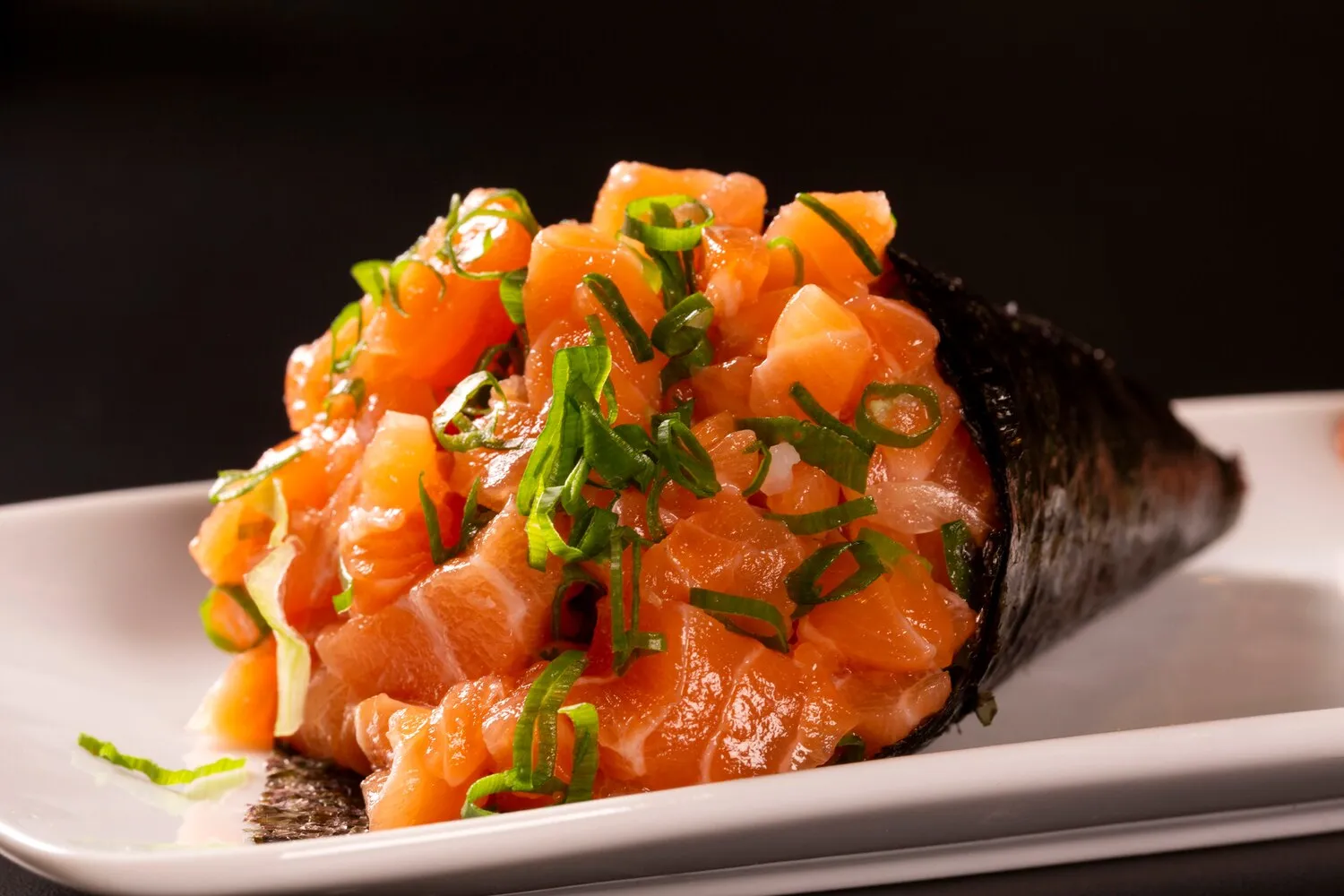
Temaki
Cone-shaped sushi, various fillings.
Nutrition Facts
* The % Daily Value (DV) tells you how much a nutrient in a serving of food contributes to a daily diet. 2,000 calories a day is used for general nutrition advice.
Hatsuki
Temaki, a relatively modern form of sushi, emerged as a casual, hand-held alternative to more formal sushi preparations like nigiri and maki. It likely originated as a quick and easy way for sushi chefs to enjoy sushi during their breaks or as a fun, interactive dining experience for customers. The do-it-yourself aspect reflects a shift towards more informal dining styles.
Temaki embodies a casual and interactive dining experience, often enjoyed at home or in informal settings. Its customizable nature makes it a popular choice for parties and gatherings, as it allows individuals to create their own preferred flavor combinations.
DIY Sushi
Temaki is a hands-on dish that encourages creativity and customization. Diners assemble their own cones, fostering a sense of participation and enjoyment.
Social Dining
Temaki parties are common, where friends and family gather to share ingredients and create their own sushi cones. It promotes a relaxed and convivial atmosphere.
Informal Setting
Unlike more formal sushi preparations, Temaki is typically enjoyed in casual settings without strict etiquette rules. It's a fun and accessible way to enjoy sushi.
The flavor profile of Temaki is highly customizable, but generally involves a balance of savory, umami, and sometimes sweet or spicy elements. The crisp nori seaweed provides a salty, oceanic base, while the rice contributes a mild sweetness and subtle acidity. The fillings offer a diverse range of flavors and textures.
The dominant flavors in Temaki are typically driven by the fillings. Common ingredients include raw fish (such as tuna, salmon, yellowtail), cooked seafood (like shrimp or crab), vegetables (cucumber, avocado, sprouts), and condiments (mayonnaise, spicy mayo, wasabi, soy sauce). The specific combinations create a symphony of tastes – from the rich, oily texture of salmon with creamy avocado to the refreshing crunch of cucumber and the fiery kick of wasabi. Nori seaweed provides a savory and slightly salty undercurrent that brings everything together.
Rice Preparation
Use sushi rice seasoned with rice vinegar, sugar, and salt. The rice should be slightly sticky but not mushy.
Nori Quality
Use high-quality nori seaweed that is crisp and flavorful. Avoid seaweed that is damp or has a fishy odor.
Filling Placement
Don't overfill the cone. Place the ingredients diagonally across the rice, leaving space to properly wrap the nori.
Wrapping Technique
Quickly wrap the nori around the rice and fillings to form a cone. Moisten the edge of the nori with a bit of water to help it seal.
Eat Immediately
Temaki is best enjoyed immediately after assembly to prevent the nori from becoming soggy.
Explore additional Sushi dishes and restaurants
Explore SushiDiscover top dining spots and culinary experiences in Rio Preto.
Explore Rio PretoLearn more about the food culture, restaurant scene, and culinary heritage of Brazil.
Explore Brazil